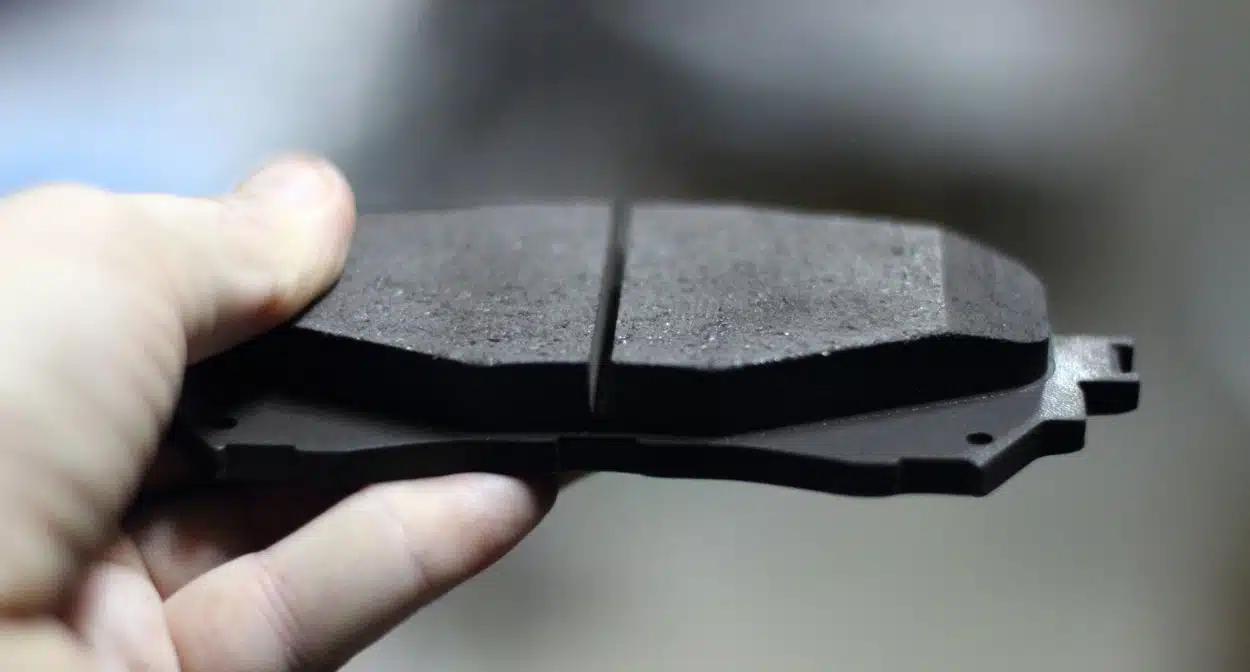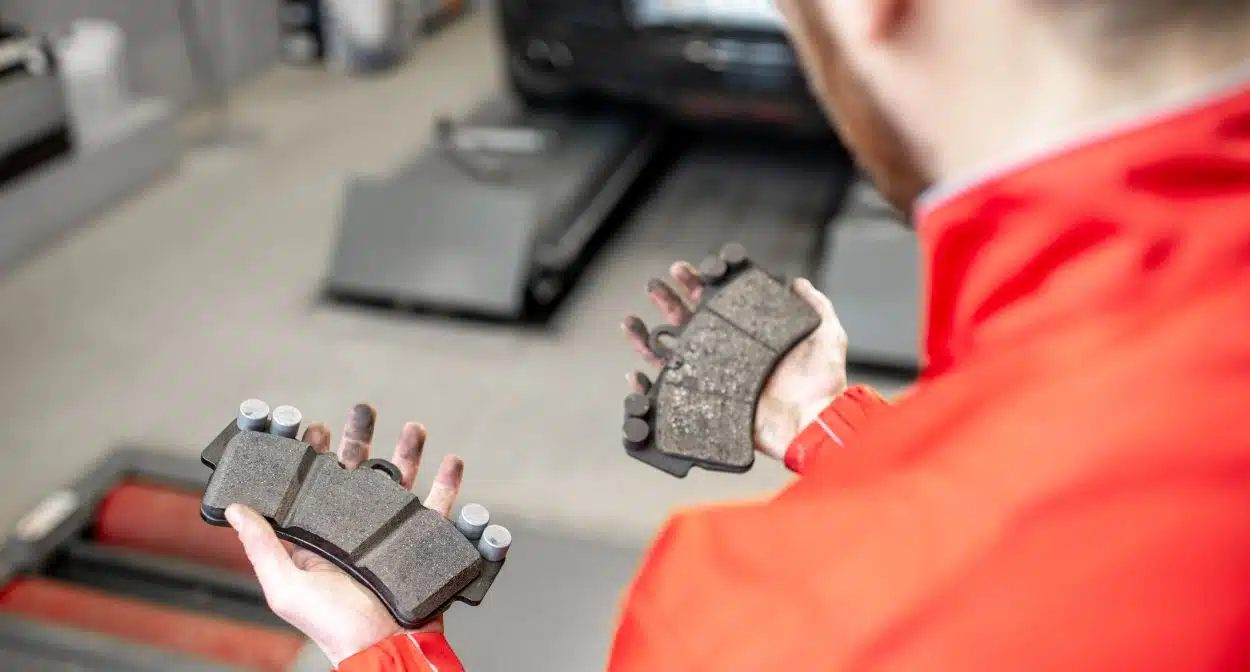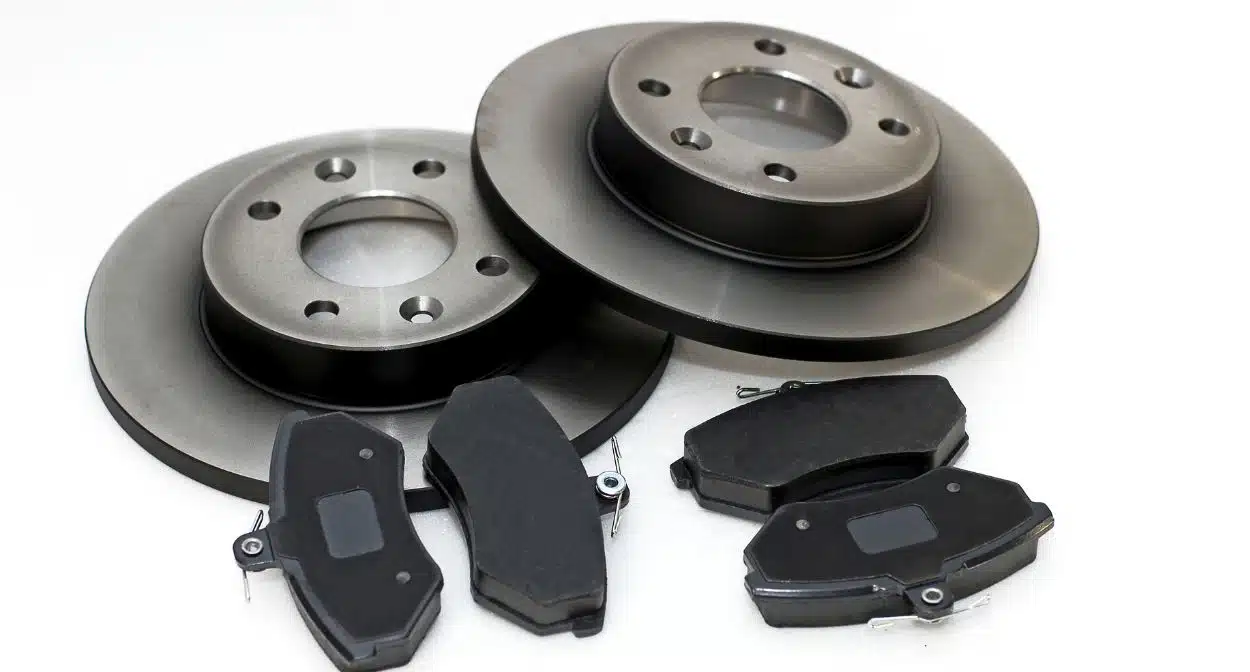Understanding the Types of Brake Pads

European import cars are designed with high performance in mind, meaning that they often require brake pads with unique formulations. Here are the main types of brake pads to consider:
Ceramic Brake Pads: Ceramic brake pads are known for their durability, quieter operation, and low dust production. They offer excellent performance in daily driving scenarios but may not withstand extreme conditions like high-speed racing as well as other options.
Semi-Metallic Brake Pads: Made from a mixture of metals (such as copper, steel, and iron), semi-metallic brake pads provide good heat dissipation, making them ideal for high-performance or heavy-duty vehicles. However, they may be noisier and produce more dust compared to ceramic pads.
Organic or Non-Asbestos Organic (NAO) Brake Pads: Organic pads, typically made from a combination of fibers, resins, and rubber, offer softer braking with low noise but tend to wear out faster than ceramic or semi-metallic options. These pads are best suited for lighter driving conditions and may be a good choice for some compact European imports used primarily for city driving.
Low-Metallic NAO Brake Pads: A hybrid of organic and metallic materials, low-metallic NAO pads deliver good performance with less noise than semi-metallic pads, making them a balanced option for both comfort and performance.
Key Considerations for Choosing the Right Brake Pads

- Daily Commuting: For daily commuting in an urban setting, ceramic or organic pads are a good choice, as they provide smooth, quiet braking and produce minimal dust.
- Sport or Performance Driving: If you frequently drive on highways, engage in high-speed driving, or use your vehicle for spirited driving, semi-metallic brake pads offer the necessary heat tolerance and stopping power.
- Off-Road or Heavy-Duty Use: For SUVs or crossovers used off-road, in mountainous regions, or with heavy loads, low-metallic NAO or semi-metallic pads are ideal for handling the extra strain and maintaining optimal braking performance.
Vehicle Specifications: Each European car model has specific brake pad requirements based on its weight, size, and braking system:
- Luxury Sedans (BMW 5 Series, Audi A6, Mercedes-Benz E-Class): Luxury sedans often benefit from ceramic brake pads, which provide a comfortable, quiet braking experience with less dust.
- Sport Sedans and Coupes (BMW M3, Audi S4, Mercedes-AMG C63): Sportier models demand semi-metallic brake pads, as these can handle the intense heat and high stopping power required for spirited driving.
- SUVs (Porsche Cayenne, Audi Q7, BMW X5): For European SUVs, low-metallic NAO or semi-metallic brake pads are ideal to support the vehicle’s weight and the braking demands of heavier loads or off-road conditions.
Temperature and Weather Conditions: Consider the climate where you live, as it can impact the longevity and performance of your brake pads.
- Cold Climates-: Organic brake pads can perform well in colder climates, as they do not require high temperatures to function optimally. However, for extreme performance in snowy or icy conditions, semi-metallic pads with excellent grip at low temperatures might be preferable.
- Hot Climates: In warmer regions, ceramic and semi-metallic pads are more suitable because of their heat tolerance, ensuring that they won’t lose braking power or wear down as quickly.
Noise and Dust Production: European imports often emphasize smooth, quiet operation. Ceramic brake pads, with their low dust production and quieter braking, are ideal for those who prioritize comfort and minimal maintenance. However, if you need stronger performance, expect some additional noise and dust from semi-metallic or low-metallic NAO pads.
Top Brands for European Car Brake Pads

- Brembo: Known for its high-performance brake systems, Brembo offers reliable options for both sports and luxury European imports, making it a top choice among car enthusiasts.
- Akebono: Akebono specializes in ceramic brake pads, known for low dust production and smooth, quiet performance, ideal for drivers who prioritize comfort and clean wheels.
- Bosch: Bosch brake pads, with advanced technology and premium materials, are designed for European vehicles and offer good durability and consistent braking.
- Hawk Performance: Hawk’s semi-metallic brake pads are an excellent option for high-performance vehicles and those who demand aggressive braking power.
- EBC Brakes: EBC offers a wide variety of pads, including ceramic, organic, and semi-metallic options, providing versatility to match different driving styles and vehicle needs.
Installation Tips and Considerations

- Rotors: Consider the condition of your brake rotors as well, as worn or damaged rotors can reduce the effectiveness of new pads.
- Brake Fluid: Brake fluid should be checked and, if necessary, replaced to ensure a firm, responsive braking experience.
- Sensors: Many European vehicles are equipped with electronic brake wear sensors that signal when the brake pads need replacement. Ensure these sensors are functioning correctly during installation to avoid surprises down the road.
Final Thoughts
Choosing the right brake pads for your European import involves understanding your driving style, vehicle type, and specific performance needs. With options ranging from smooth, low-dust ceramic pads to high-performance semi-metallic options, the right brake pads will enhance your driving experience, providing safety and satisfaction for years to come. When in doubt, consult with a European car brake specialist to ensure your brakes meet both your expectations and your vehicle’s standards.


